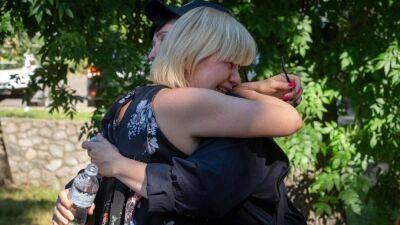‘Those bastard developments’ – why the inventor of the shopping mall denounced his dream
‘Every day will be a perfect shopping day,” cooed the adverts for America’s first indoor mall when it opened in Edina, Minnesota, in 1956. Edina is blanketed by snow and ice in winter, and baked by unbearably humid heat in summer. The Southdale Center offered the bliss of balmy strolls all year round.
Inside its crisp, white, rectangular blocks lay neat parades of shops arranged around a three-storey Garden Court of Perpetual Spring, where 50ft eucalyptus trees rose towards high windows and exotic vines tumbled from balconies overhead. A cylindrical cage filled with brightly coloured birds towered over cafe tables adorned with cheery yellow umbrellas (despite the lack of weather), while a carousel turned to the soothing sounds of muzak. Compared with the familiar low-rise, outdoor strip malls, this climate-controlled, multi-storey shopping landscape was a breakthrough.
“Flow up and down is so easy and uninhibited,” gushed Architectural Forum, on the novel use of escalators, “and so much gaiety is added by that second layer of moving people, lights and colour, that timidity about two-level design now seems pointless.”
This radical vision was the work of Victor Gruen, a Jewish refugee who had fled Nazi-occupied Austria in 1938. He set his sights on bringing a dose of Viennese urbanity to what he saw as the car-dominated “avenues of horror” of American commercial strips. He imagined Southdale as the centre of a new high-density, mixed-use district, surrounded by housing and offices, as well as a school and a medical centre, with an artificial lake wrapped by curved streets, all forming a utopian “blight-proof neighbourhood”.
Dayton, the development company, had other ideas. The construction of the shopping centre massively
Read more on theguardian.com























